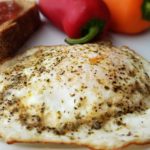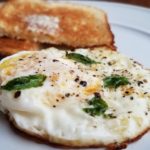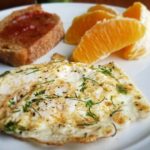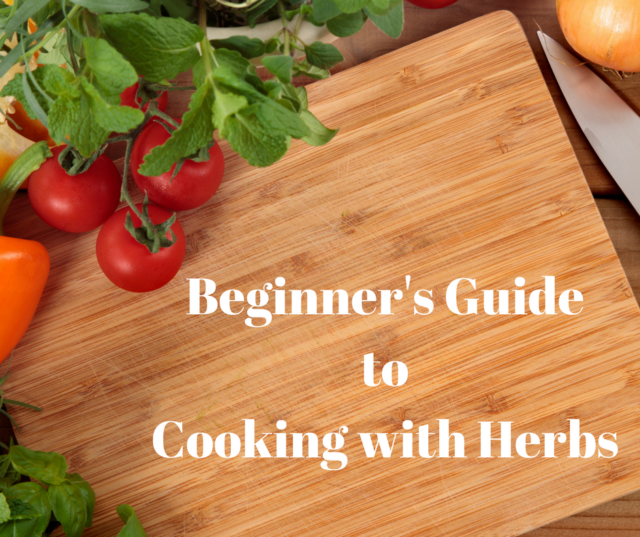
When I began my journey of learning to eat healthy, cooking with herbs was right up there with trying to learn a foreign language. My mother never used herbs unless they were in a packet inside of some processed food. So it’s a technique I hadn’t learned while growing up. But when I studied about the health benefits of herbs, I knew I had to learn.
The problem was, I didn’t want to waste a lot of money making a recipe only to find out that I didn’t like the taste of the herb included in the ingredients. Not only would I have wasted my money on the herb, I would have wasted money on the other ingredients as well.
Eventually, I came up with a very cost effective plan:
- Begin with one herb at a time.
- Test the herb on eggs (eggs have a neutral taste and are inexpensive).
- Egg with Italian Seasoning
- Egg with Basil
- Egg with Chives
- When making a vegetable recipe, test the herb on just one section of the vegetables in the pan and taste it. If you like it, add the herb to the rest of the vegetables.
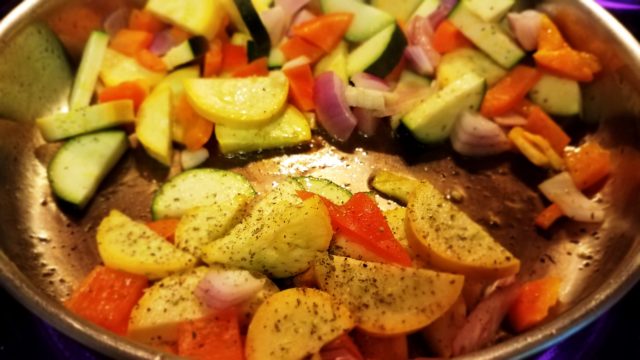
- If you are making a meat recipe, test the herb on just one piece of meat (preferably an extra piece). I usually use an individual piece of chicken (sauteed or baked).
While testing herbs in this manner, I found that my favorite herbs are basil, cilantro, and chives. And for convenience, my favorite blend is Italian seasoning. Once I had it honed down to these herbs, I then began googling recipes which included them. Suddenly, learning to cook with herbs was no longer like learning a foreign language but had become a very easy and inexpensive experience for me.
Dried vs Fresh:
Don’t stress over whether you should use dried or fresh. If helpful, write this inside of your recipe book so you’ll have it for quick reference:
- 1/2 teaspoon dried = 1 tablespoon fresh.
- When using dried, rub them in the palm of your hand to release the oils.
- Dried herbs are usually added at the beginning of the recipe.
- Fresh herbs are usually added the last few minutes of cooking.
If you’re worried about a fresh herb wilting while stored away in your fridge for weeks on end, use the following tips:
- Google other recipes containing the herb you plan to try out on eggs and use the remainder later in the week.
- Wrap any remaining fresh herbs in a paper towel and freeze them for future use.
- When you get ready to use them again just make sure you cut the needed portion off quickly with a pair of scissors right into your recipe so the remainder doesn’t thaw in your hand.
Another convenient way to include herbs is in salad dressings. I use the following 3-2-1 ratio as a go-to base for a variety of dressings:
- 3 Tablespoons Olive Oil
- 2 Tablespoons of Vinegar (I like Red Wine or Balsamic Vinegar)
- 1 Tablespoons Sweetener (Raw Unfiltered Honey or Coconut Sugar) or sweeten to taste with Stevia (my favorite)
I then add about 1/2 tsp of the herb I am trying out. I especially like cilantro, dill, chives, or Italian Seasoning. You can also add 1 tsp of mustard and 1 clove of garlic chopped. A few of the recipes on my website that include herbs are:
- Delicious Enchilada Casserole
- Asiago Cream Sauce over Herb Chicken
- Halibut with Honey Lime Sauce
- My Favorite Taco Salad
- Dill and Cilantro Dressing over Greek Salad
- Easy Homemade Bone Broth
- Vegetable Beef Soup
- Chicken, Cilantro and Avocado Lime Soup
Of course the number one reason for including herbs in my diet has to do with their health properties. In fact, I found out that the Bible lists numerous plants and herbs which were used by the Israelites for various health reasons. In The Maker’s Diet, Jordan Rubin lists what he believes are the 21 top healing herbs listed in the Bible. You can order his book (which I used for “My Food Cure”) by clicking image below.
It’s also interesting to note that Ancient societies thought herbs contained spirits because they would be healed of diseases when they ate them or used them topically. The healing properties were very real, but what they didn’t realize was that they were actually worshiping a chemical placed in the herbs by God when he created them for the healing of our bodies.
The health benefits of individual herbs are listed in my book, “Eating with Purpose”:
Below are my 4 of my favorites:
- Basil: May act as an anti-inflammatory, help with cardiovascular health, protection against bacterial growth, and protect cell structures.
- Coriander or Cilantro: May help with acid indigestion, gas, rheumatism, toothaches, and elimination of harmful metals from the body. Contains natural chemicals that may help control body odor.
- Chives: May help protect against various cancers, aid with sleep, enhance mood, and contribute to bone health.
- Italian seasoning: may act as an antibacterial with antioxidants, contribute to healthy digestion, reduce stress, detox cells.
I sincerely hope this makes your journey a little more enjoyable and less intimidating. If you have a favorite recipe using herbs or a technique for testing the taste of herbs, please share with the rest of us!
(Note: I do receive a commission for any item purchased off this page. All proceeds go toward the support of our non-profit, “Twiford Ministries, Inc.”)
